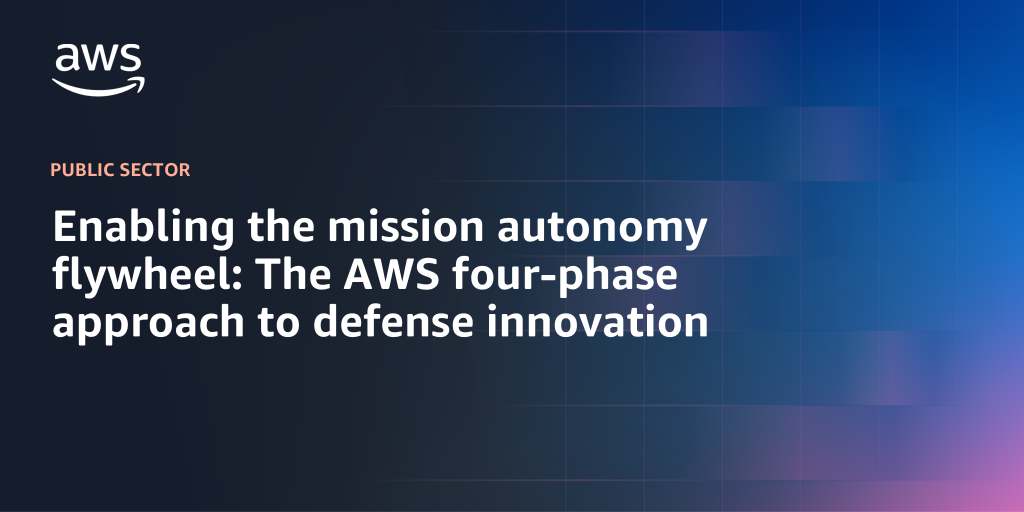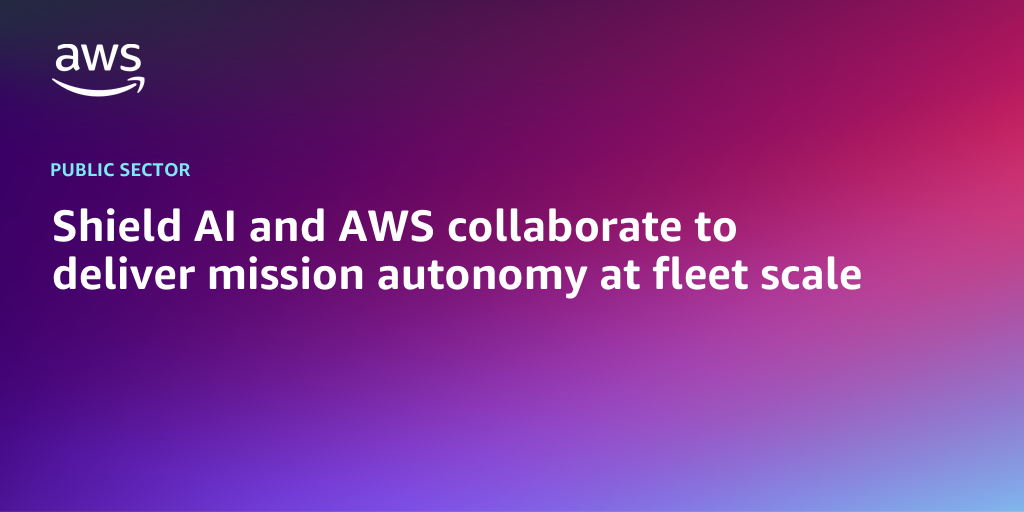AWS Public Sector Blog
Category: AWS IoT Core
Enabling the mission autonomy flywheel: The AWS four-phase approach to defense innovation
In this post, you will learn how AWS technologies support the entire autonomous system lifecycle from AI-powered design and virtual prototyping in pre-deployment, to edge computing through services like AWS IoT Core and AWS IoT Greengrass and related solution guidance like Tactical Edge Application Deployment on AWS and Cloud Edge Global Access (CEGA) during deployment, through real-time mission operations, and finally to post-mission evolution using secure over-the-air updates and predictive maintenance.
Shield AI and AWS collaborate to deliver mission autonomy at fleet scale
This significant growth in military unmanned aerial vehicles, which serve as a proxy for the broader autonomous systems market, underscores the urgent need for scalable, secure, and efficient software deployment solutions. As the number of autonomous platforms increases, so does the complexity of managing their software systems. In response to this growing challenge, Shield AI and AWS have collaborated and successfully demonstrated a scalable architecture and proof of concept (PoC) that addresses challenges often seen when deploying autonomy software and machine learning algorithms onto autonomous systems.
How AWS IoT services address NIST 800-183: Networks of ‘Things’
In this post, we will explore AWS IoT services in the context of NIST Special Publication 800-183: Networks of ‘Things’. NIST 800-183 presents a model for expressing IoT deployments and establishes concerns about the trustworthiness of the Internet of Things, which AWS IoT services can help public sector organizations address. We will delve into key areas such as authentication, monitoring, and secure communication.
4 common IoT protocols and their security considerations
With the Internet of Things (IoT), selecting the right communication protocol ensures efficient data exchange and seamless connectivity between devices and the cloud. With a multitude of IoT protocols available, choosing the one that best suits your specific use case can be challenging. In this blog, we explore four common protocols used to connect IoT devices to the cloud and shed light on when and where to deploy them for optimal results.
Safeguarding data exchange in government using AWS
When government agencies choose Amazon Web Service (AWS) to store data, they choose to take advantage of inheriting the strictest security controls and standards. In addition, AWS services offer a unique opportunity to enhance networking and security approaches, ensuring safe and resilient data transfer mechanisms. This blog post provides guidance towards data sharing among government agencies, offering prescriptive approaches and best practices for implementing secure data exchange solutions using AWS services.
The role AWS is playing in Prosper Africa Tech initiatives
The Prosper Africa Tech for Trade Alliance is a collaboration uniting leading American and African tech companies behind the mission of accelerating e-commerce and digital trade in Africa. The recently announced collaboration between Amazon Web Services (AWS) and Choppies, a leading supermarket chain in Botswana, exemplifies the Alliance’s model of impact-oriented public-private partnerships. This post highlights the AWS-powered deployment of Choppies’ state-of-the-art Farmer’s app across its supplier network.
Wings for Life World Run uses AWS to scale when it matters most
The Wings for Life World Run is a global charity run that has raised funds to help find a cure for spinal cord injury since 2014. Every year, the event gives 100% of its entry fees and donations to research supported by Wings for Life, a not-for-profit foundation that supports spinal cord research. Participants can join the event worldwide at the same time, using the Wings for Life World Run App. To scale to meet the spike in demand to the Wings for Life World Run App and give real-time leaderboard updates for the global virtual race, Wings for Life World Run uses AWS.
Transporting people and freight more efficiently with cloud-based technologies
Freight transportation companies and logistics service providers are being challenged by spikes in e-commerce volume. The need for real-time, dynamic re-adjustment of global supply chains has shortened planning cycles from weeks to hours, and requires faster IT workloads, quicker access to data, increased ability to innovate, and more. Amazon Web Services (AWS) and cloud technologies can help by bringing cost-effectiveness, scalability, elasticity, and agility to freight and people transportation systems.







